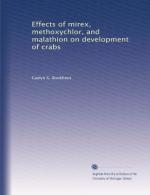|
This section contains 527 words (approx. 2 pages at 300 words per page) |

|
Chlorinated hydrocarbons are compounds made of carbon, hydrogen, and chlorine atoms. These compounds can be aliphatic, meaning they do not contain benzene, or aromatic, meaning they do. The chlorine functional group gives these compounds a certain character; for instance, the aromatic organochlorine compounds are resistant to microbial degradation; the aliphatic chlorinated solvents have certain anesthetic properties (e.g., chloroform); some are known for their antiseptic properties (e.g., hexachloraphene). The presence of chlorine imparts toxicity to many organochlorine compounds (e.g., chlorinated pesticides).
Chlorinated hydrocarbons have many uses, including chlorinated solvents, organochlorine pesticides, and industrial compounds. Common chlorinated solvents are dichloromethane (methylene chloride), chloroform, carbon tetrachloride, trichloroethane, trichloroethylene, tetrachloroethane, tetrachloroethylene. These compounds are used in drycleaning solvents, degreasing agents for machinery and vehicles, paint thinners and removers, laboratory solvents, and in manufacturing processes, such as coffee decaffeination. These solvents are hazardous to human health and exposures...
|
This section contains 527 words (approx. 2 pages at 300 words per page) |

|


